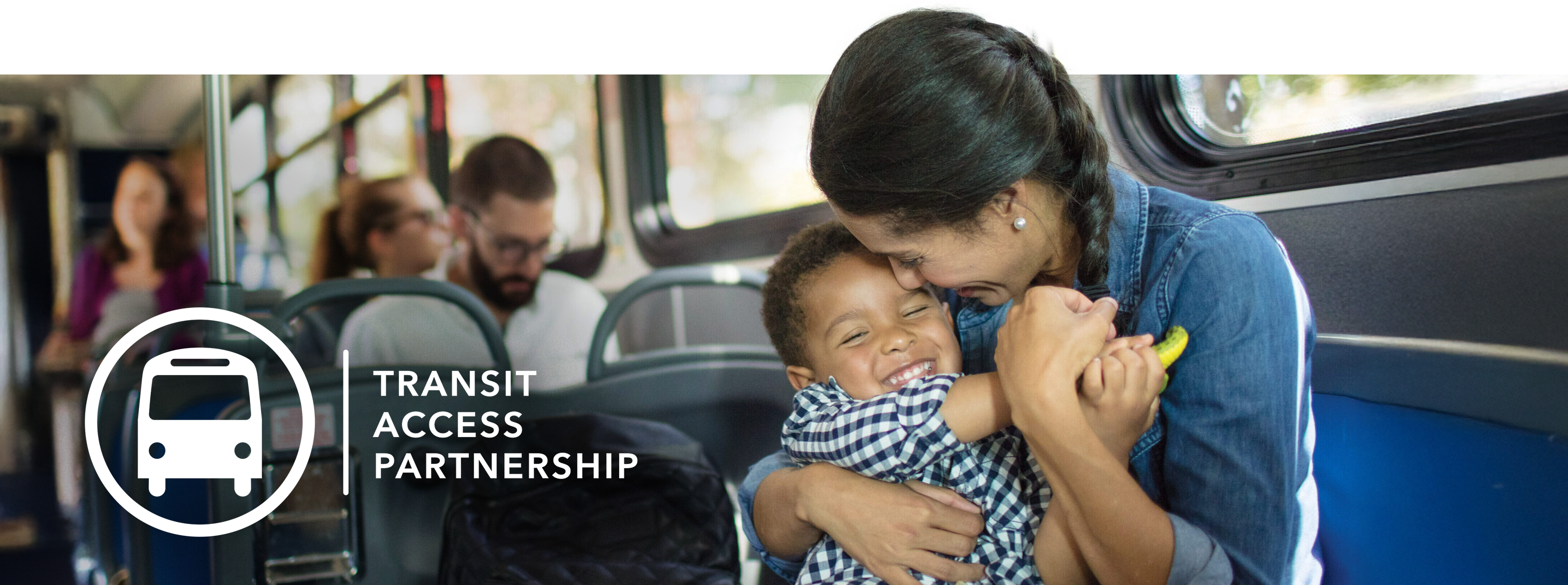
Support Zero Fare Transit
The Transit Access Partnership (TAP) offers a way for the community to help keep Zero Fare transportation available to everyone. Donate online or make a check payable to RideFinders—a registered 501(c)(3) nonprofit division of GRTC. Checks can be mailed or dropped off at RideFinders, 1013 E Main St., Richmond, VA 23219.
Why Zero Fare Matters
GRTC is proud to be a national leader in providing Zero Fare transit to our community.
At GRTC, we believe that Zero Fare is essential to the greater Richmond region’s growth and prosperity. It ensures access to work, school, medical appointments and other necessities. While our Zero Fare service is currently supported by a state grant, we are looking for support from our community to maintain the program. Your tax-deductible donations – made possible through a partnership with RideFinders, a registered 501(c) 3 affiliated with GRTC – will help ensure that service remains Zero Fare.
Transit-Oriented Development
The Federal Transit Administration has funded extensive research on TOD, highlight how fare policies affect development outcomes. The FTA findings suggest that TOD thrives especially when transit is frequent, affordable, and accessible which zero-fare policies help create.* Zero-fare is important nationally regarding supporting transit-oriented development (TOD) because it directly supports the goals of equitable access, economic vitality and urban growth.
More Dollars Available For Essential Needs By Riders With Limited Funds
74% of Rider Households Earn Less Than $40K
The American Economic Journal conducted a randomized trial where they found that free transit doubled usage among low-income individuals, which helped people access health services, community amenities, and education.* Communities where public transit is a lifeline due to limited financial resources, depend on zero-fare transit because it frees up income for essential needs.
Improved Access to Healthcare, Education, Jobs, Food, and Recreation
RVA Riders support how zero-fare can bridge the gap for low-income families to help access recreational and or community events, access to grocery stores and visit parks. Such access highlights social inclusion and quality of life.*
* Walker, F. (2025). “free to move: The role of zero-fare transit in advancing…
Reduces Carbon Emissions
National Academies conducted a study and found that passengers contributed to 55% less GHGs per mile by riding U.S. transit in 2018 compared to those driving or ride hailing alone.*
- GRTC’s Zero-Fare Initiative helps reduce carbon emissions by encouraging more individuals to choose public transit over personal vehicles.
- Fewer Cars = Less Traffic and Idling
Lower Emissions Per Passenger
* Office of the Secretary, U. S. D. of T. (2023). Transitioning to zero-emissions bus operations.
Improves Health Outcomes
By encouraging walking and biking.
The U.S. Department of Transportation mentions how almost a quarter of adult’s report to lack engagement in physical activity outside of their jobs and two-thirds of U.S. adults are overweight or obese. Also suggesting that transportation agencies create opportunities for people to exercise recreationally.*
In communities where physical activity levels are low and chronic diseases are reflected, zero-fare transit matter nationally because it improves physical activity, like walking and biking.
* U.S. Department of Transportation. (2024). Active transportation and health.
Increases Ridership
The American Public Transportation Association (APTA) estimates that every $1 invested in public transit can generate up to $5 in economic returns which is multiplied by the increase of ridership. In 2019, Americans took 9.9 billion trips on public transportation.
* Zero-fare initiatives for public transit ensures accessibility and equity which increases the number of passengers.
* APTA. (2025, September 10). Public transportation facts. American Public Transportation Association.

Transit-Oriented Development
The Federal Transit Administration has funded extensive research on TOD, highlight how fare policies affect development outcomes. The FTA findings suggest that TOD thrives especially when transit is frequent, affordable, and accessible which zero-fare policies help create.* Zero-fare is important nationally regarding supporting transit-oriented development (TOD) because it directly supports the goals of equitable access, economic vitality and urban growth.
More Dollars Available For Essential Needs By Riders With Limited Funds
74% of Rider Households Earn Less Than $40K
The American Economic Journal conducted a randomized trial where they found that free transit doubled usage among low-income individuals, which helped people access health services, community amenities, and education.* Communities where public transit is a lifeline due to limited financial resources, depend on zero-fare transit because it frees up income for essential needs.


Improved Access to Healthcare, Education, Jobs, Food, and Recreation
RVA Riders support how zero-fare can bridge the gap for low-income families to help access recreational and or community events, access to grocery stores and visit parks. Such access highlights social inclusion and quality of life.*
* Walker, F. (2025). “free to move: The role of zero-fare transit in advancing…
Reduces Carbon Emissions
National Academies conducted a study and found that passengers contributed to 55% less GHGs per mile by riding U.S. transit in 2018 compared to those driving or ride hailing alone.*
- GRTC’s Zero-Fare Initiative helps reduce carbon emissions by encouraging more individuals to choose public transit over personal vehicles.
- Fewer Cars = Less Traffic and Idling
Lower Emissions Per Passenger
* Office of the Secretary, U. S. D. of T. (2023). Transitioning to zero-emissions bus operations.


Improves Health Outcomes
By encouraging walking and biking.
The U.S. Department of Transportation mentions how almost a quarter of adult’s report to lack engagement in physical activity outside of their jobs and two-thirds of U.S. adults are overweight or obese. Also suggesting that transportation agencies create opportunities for people to exercise recreationally.*
In communities where physical activity levels are low and chronic diseases are reflected, zero-fare transit matter nationally because it improves physical activity, like walking and biking.
* U.S. Department of Transportation. (2024). Active transportation and health.
Increases Ridership
The American Public Transportation Association (APTA) estimates that every $1 invested in public transit can generate up to $5 in economic returns which is multiplied by the increase of ridership. In 2019, Americans took 9.9 billion trips on public transportation. *
Zero-fare initiatives for public transit ensures accessibility and equity which increases the number of passengers.
* APTA. (2025, September 10). Public transportation facts. American Public Transportation Association.


Encourages Mode Shift From Single Occupancy Vehicles
Phasellus viverra nulla ut metus varius laoreet. Quisque rutrum. Aenean imperdiet. Etiam ultricies nisi vel augue. Curabitur ullamcorper ultricies nisi. Nam eget dui. Etiam rhoncus.
More Dollars in the Economy
Maecenas tempus, tellus eget condimentum rhoncus, sem quam semper libero, sit amet adipiscing sem neque sed ipsum. Nam quam nunc, blandit vel, luctus pulvinar, hendrerit id, lorem.


Transit Freedom
Maecenas nec odio et ante tincidunt tempus. Donec vitae sapien ut libero venenatis faucibus. Nullam quis ante.
How Zero Fare Started
GRTC launched Zero Fare service in March 2020 as a safety measure during the COVID-19 pandemic—reducing close contact between bus operators and passengers at the farebox. What began as a public health response quickly became a vital service for the community.
In December 2021, GRTC received $8 million in grant funding from the Virginia Department of Rail & Public Transportation (DRPT) to study Zero Fare service. This state funding, along with local contributions from the City of Richmond and Virginia Commonwealth University (VCU), made it possible to continue providing fare-free transit for our riders. Now GRTC is seeking new funding sources to continue Zero Fare service into the future.
Community Partners
Our community partners helps support the Transit Access Partnership, allowing GRTC to offer Zero Fare service that benefits the community and contributes to growing the economy. GRTC deeply appreciates their commitment to our mission and our riders. With their support, GRTC can continue to improve rider mobility and equality for the Richmond Region.
Advertising Program
One hundred percent of the proceeds from advertising goes to keeping our system Zero Fare. GRTC’s advertising program has a far-reaching impact to broad audiences. The mobility of transit vehicles allows for extensive geographical coverage and exposure to individuals on and off transit vehicles.

